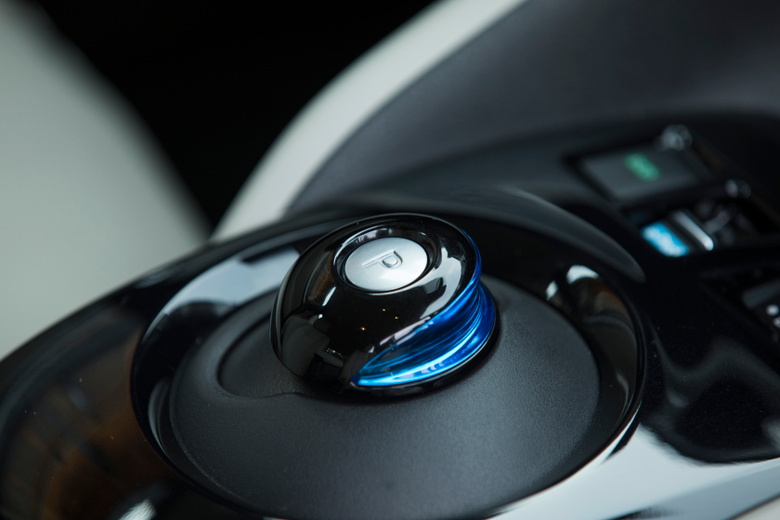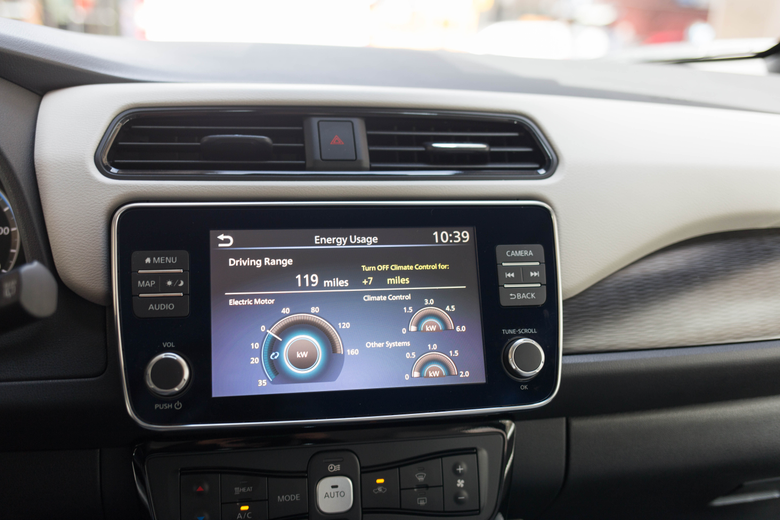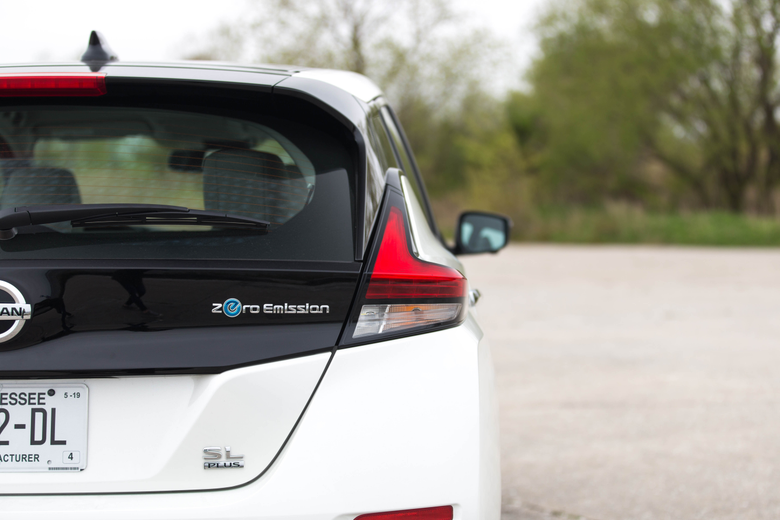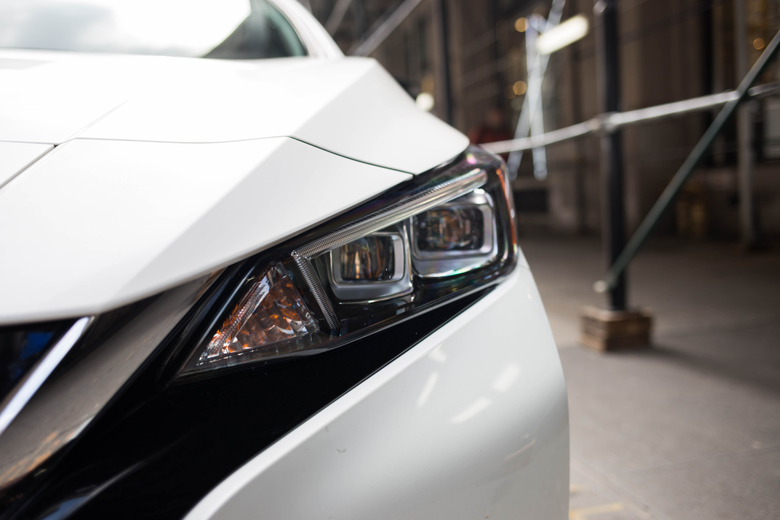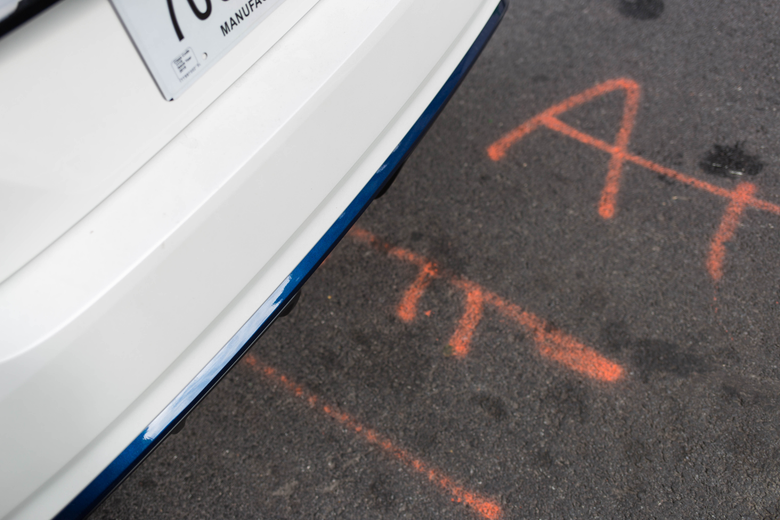The 2019 Nissan Leaf Plus Brings The Range And The Fun
The moment I laid eyes on the 2019 Nissan Leaf Plus, I knew it had been improved. The front was finally fixed. Rejoice! Gone was the goofy, frog-like face. Here was something with a sharpened up facia and a long-range battery option to boot. This is the Leaf you want.
The bigger battery means more range and more power; the redesign goes a long way to make the package more appealing.
(Full Disclosure: We wanted to drive the extended-range Leaf so badly that Nissan let us borrow one for a week.)
It didn't take long for the power, paired with an EV's innate ability to produce torque instantly, to cement the Leaf Plus in my mind as a fun-filled electric car. For too long, traits like "efficiency" and "economy" usually also meant mundane and boring.
But no more in the Leaf Plus. I was thrilled.
What Is It?
The Leaf is Nissan's all-electric car, now in its second generation. From the start, it's always had a five-door hatchback design, sized on the more compact side. And it's arguably the coolest thing Nissan makes right now.
Sure, it doesn't have the manual transmission you can get in the 370Z, nor the power of the GT-R, but that's because this is a different kind of cool. This is future-cool, and normalized in a way where you'd get used to driving an electric car in under an hour after a whole lifetime of operating cars with internal combustion engines.
Specs That Matter
The 2019 Leaf Plus is powered by a 62 kWh battery pack, which offers a claimed range of up to 226 miles, a claimed 214 horsepower and 250 lb-ft of torque. For the Plus, you get an approximate zero to 60 mph time of about 6.5 seconds. Not bad.
The standard Leaf, by comparison, has a 40 kWh battery pack that should be good for 150 miles and has a claimed 147 horsepower and 236 lb-ft of torque.
The car's battery is located in the center of the body. And since the motor is located in the nose, it doesn't have a front trunk, only a traditional rear trunk.
But that's alright because the trunk is decently sized. With the second row upright, it has 23.6 cubic feet of storage space, and 30 cubic feet of space with the second row folded. A couple rolling bags and backpacks tuck in just fine. The Chevrolet Bolt EV, on the other hand, only has 16.9 cubic feet of space behind the second row.
And because the Leaf's trunk profile is tall rather than squat, it offers a greater amount of usable vertical space. You can stand suitcases upright, for example.
What’s Great
Nissan nailed it with the design. The Leaf finally looks like an ordinary car, with styling that's tasteful and modern but doesn't scream to the world I AM ELECTRIC AND THEREFORE I MUST LOOK DIFFERENT! It's hard to say if the bulbous face of the first-gen deterred other buyers, but it certainly discouraged me.
Driving the Leaf is actually great. It's not a very large car and everything feels securely bolted down. The steering's tight, the brakes are responsive and learning how to modulate one-pedal driving with the e-Pedal is intuitive and simple to figure out. It even works while in reverse. And if you don't want to use the e-Pedal, there's a big toggle in the center console to pull to easily turn it off.
The Leaf does a great job of insulting the cabin from a large amount of wind and tire noise, two things that become very obvious when there isn't an engine to drone them out.
The driver's seat can be raised up quite high, so instead of the low seating position I'm usually forced into with the other cars I test drive, I could sit tall and happy in the Leaf. Visibility was not compromised out the front and the sides due to the downward sloping belt-line. There are a lot of hard plastics inside, but they don't feel cheap to the touch and the seat materials were luxurious.
While in reverse, the car makes very charming little chiming noises to alert those nearby that it was backing up.
What’s Weak
Over-the-shoulder glances were not as ideal as I thought they would be, especially from the driver's seat of a hatchback. The Leaf's belt-line, though sloping toward the front, cuts off visibility behind the C-pillar and exaggerates the car's rear blind spots.
Furthermore, the rear seats are distinctly more raised than the fronts (probably because they're on top of a battery pack). While that was exciting for a shorty like me, I could see how a taller someone might actually bump their head on the ceiling if they were longer in the torso.
I couldn't get used to the shifter, either. The Leaf doesn't have a traditional P-R-N-D gear lever selector. It has this knob thingy; shifting it left and down put the car in drive, shifting it left and up put it in reverse. At least putting it in park is simple enough—you just push the silver P button.
Driving
The Leaf, like all electric cars, rockets forward from a standstill. On paper, its power figures might not impress you much but in practice, the thing can blow your hair back. And it makes the best, little futuristic whining noise when you accelerate hard enough.
From a stop sign? WheeeeeEEEEEE!
From a red light? WheeeeeEEEEEE!
From a yield sign? WheeeeeEEEEEE!
To merge? WheeeeeEEEEEE!
It's fun, and the beauty is that by the time you feel done with accelerating you probably still aren't breaking the speed limit. All the torque tricks you into thinking you're accelerating faster than you are. The resulting attitude is one of joy. You can floor the Leaf and not get into trouble. Clearly, no one is going to hear you coming, anyway. That made things exciting and fun. Low speeds are where it shines the brightest.
The Leaf's agility in corners isn't bad, either. It has so much weight lying in its floor that the center of gravity is low, making you feel like you can flick it into a turn as fast as you can think.
On the highway, there's considerably less appreciable punchiness. Oh, you'll still accelerate, but it's not with the same forceful, addictive acceleration as you get around town.
I had the Leaf for close to a week. I didn't drive it every day, but I did sit in traffic a lot and I brought it out once to get from Brooklyn to Queens on a dumpling and grocery run. The range fell to about halfway by the time we had to give it back to Nissan. That was a good thing, too, because the closest charging station to my apartment was for a Tesla only.
The Leaf Plus starts at $42,550, but because mine had some kick plates and premium paint, it came to a final price of $44,270. This is by no means a cheap car. Not as much as a Tesla Model S, I guess, but also not as capable.
You can also consider the price of the gas you won't need anymore and also appropriate state and federal tax incentives. If that's still too much money for you but you want an EV, consider getting a used one.
Verdict
Electric cars are part of the biggest revolution to come to the automotive space in nearly 100 years. And yet, despite being a massive departure from the traditional propulsion systems that we've all come to know, the Leaf doesn't actually drive that differently from a typical, internal combustion engine car.
This means that it's easier than ever for people to make the jump from ICE to EV when they eventually do (once we get our charging infrastructure sorted out, of course). This is invaluable since people, in general, detest change and do everything they can to avoid it.
The Leaf isn't just another EV with kneecapped abilities; a recycled idea from an existing ICE car and produced just to keep an automaker compliant with regulations. You get the sense Nissan is committed to designing and manufacturing this car to be a serious competitor in the EV space. It's no afterthought.
The Leaf the most exciting thing Nissan has made within the past few years, a legitimately fun, little electric car. Yes, we rag on Nissan for forgetting its rich sports car past a lot, but we'd be fools to ignore its electric future nonetheless.






